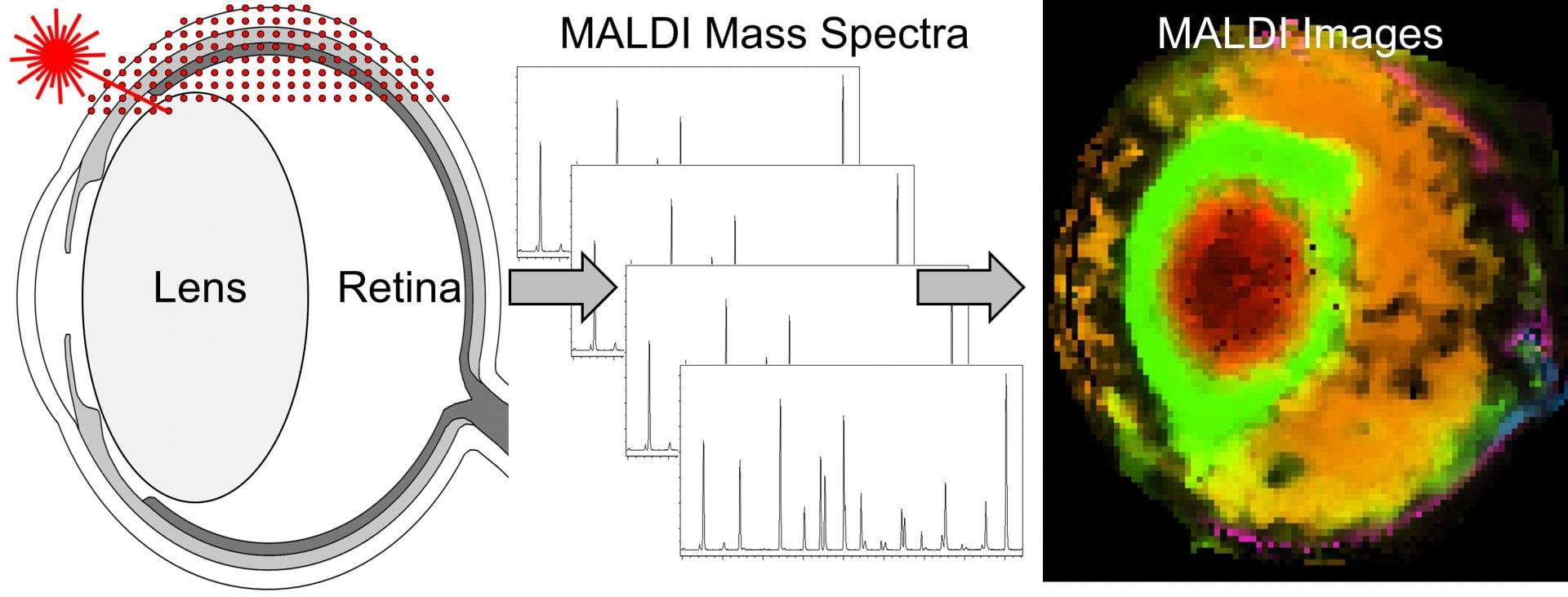Whole Eye MALDI Imaging
Dr Angus GreyIntroduction
Lens cataract is the most prevalent form of blindness in the world, and is due to alterations in the concentration of lens metabolites in specific lens regions, which leads to subsequent protein modifications and lens opacification. Some of these changes have recently been characterised in the lens using MALDI imaging, which is a novel, mass spectrometry-based technique that maps the spatial distribution of tens to hundreds of proteins, peptides, lipids, metabolites, or drugs in thin tissue sections. However, the emerging ‘healthy lens, healthy eye’ hypothesis suggests that a healthy, transparent lens plays a crucial role in inter-tissue metabolism to maintain overall ocular health. Using a newly established method for whole eye section MALDI imaging, this project will map metabolic interactions between ocular tissues in a variety of physiological conditions.
What we are looking for in a successful applicant
- Skills such as mass spectrometry, cryosectioning, immunohistochemistry and confocal microscopy would be useful, but not essential.
- Good writing skills are essential
Objective
Using a newly established method for whole eye section MALDI imaging, this project will map metabolic interactions between ocular tissues in a variety of physiological conditions.
Project Code: 10437915
Faculty: Faculty of Medical and Health Sciences
Department: Physiology
Main Supervisor: Dr Gus Grey
For more information, check out find a thesis

